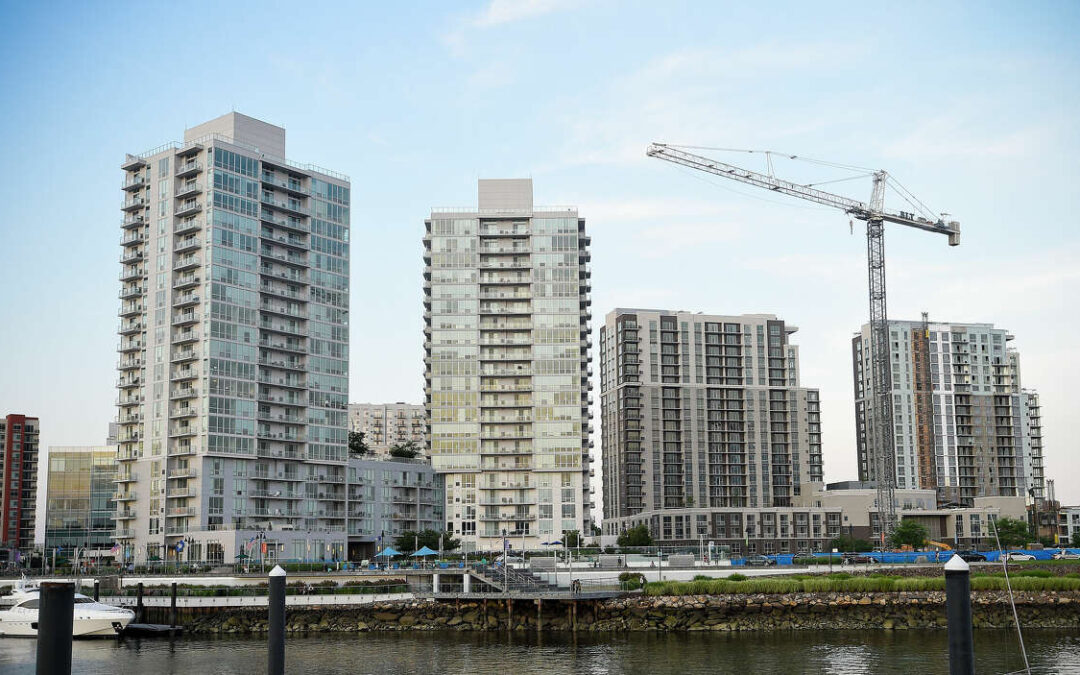This article was originally published in the StamfordAdvocate.com
Demolishing Historic Buildings in Stamford Robs It of a Sense of Place
Stamford is a “cultural hellhole” for Arthur Augustyn. In his op-ed last month, he argued that Stamford’s development progress is hindered by a certain vocal contingent of native Stamfordites that he calls the CAVE people — Citizens Against Virtually Everything.
CAVE People live in the past, according to Augustyn. They oppose replacing anything old with anything new, and their constant kvetching at public meetings prevents productive conversations about real issues and derails progress.
Mr. Augustyn also seems to believe that most old buildings are largely useless and expendable, as he includes them as “outdated things.” Likewise, those of us in the historic preservation community are, by definition, CAVE people.
The notion that old buildings are expendable is not new. During the Urban Renewal period (1950s to 1980s), it was the dominant mode of thought, resulting in the destruction of whole residential and commercial neighborhoods that could have been repurposed alongside new construction. But this was post-war America, the age of the automobile, so out with storefronts and in with malls, parking lots, tall office buildings and multi-lane roads. Think Tresser Boulevard. Fifty years later, this describes many towns around the country, and the result is that one town has become indistinguishable from the next.
Historic preservation and adaptive reuse are part of the urban planning process. Allowing historic districts to be destroyed is regressive. Preservation isn’t about preventing change, but about finding ways to adapt to change and changing in ways that ensure quality of life.
Preventing all demolition is not the goal of the preservation community. There are instances in which there is no reasonable alternative. But reinvigorating downtowns while preserving and reusing structures is now a mainstream current that seeks to create contextual, pedestrian-friendly, human-scale development where new construction (infill) is incorporated into the old and adaptive reuse is a given, so this should be the first priority, particularly in historic districts.
Areas that mix commercial, office and residential, that retain the old while incorporating the new, have reused historic buildings with or without the imprimatur of historic designation. Buildings are durable goods, and an old building can be retrofitted and updated to extend its useful life.
The historic buildings in Stamford’s officially designated downtown historic district are generally intact. Stamford’s South End historic district, however, has not fared so well since its designation in 1986. The city’s own Master Plan and South End Study both recommended that future development there ensure the retention of the district’s historic buildings, yet the city has allowed developers to demolish half of them, and the buildings that have replaced them dwarf those remaining. Those residents who continue to advocate for their now overdeveloped neighborhood have largely lost the battle to retain its historic character and human-scale livability.
Mr. Augustyn, notably, plays an apologist for developers with his claim that maybe they can’t afford to build quality buildings because of lawsuits from citizens opposing development. This is unserious and laughable speculation. I haven’t noticed many high quality buildings either on vacant land or where demolition wasn’t opposed.
Mr. Augustyn further contends that advocates push to save too many buildings for the sake of the lower bar of remembering “just some guy,” rather than someone of historic importance. Of course, any awe-producing buildings merit distinction. Great architectural distinction, uniqueness, and the history of well-known people and events are the high bars, but these are not the only legitimate reasons to save old buildings.
Even ordinary buildings serve as community anchors because they are part of our personal histories and memories; they remind us of local events, history and traditions. Such buildings may be harder to recognize as fit for preservation, but, in fact, there are numerous reasons to save and reuse them.
They may be designated historic because they represent a local or vernacular architectural style, be emblematic of architectural patterns, or even be the last one or ones left representing some aspect of local architectural or social history that merits acknowledgment.
Historic designation isn’t necessary for adaptive reuse. Their location and the human scale often make them quite adaptable.
Historic buildings are good candidates for residential redevelopment, either as market-rate or affordable housing, using programs such as Stamford’s 7.3 ordinance, which gives developers a density bonus and other waivers to encourage preservation.
Reusing existing buildings is good for the environment. It conserves embodied energy, (which is defined as the sum of all energy required to extract and transport raw materials, manufacture and transport the building materials, put them together at the building site and transport the workers to the site.
Preservation contributes to local culture by anchoring people to their home environment, giving them what we in the preservation community call a “sense of place.” Cultural associations are rooted not just in what people come together to do, but in where they gather to socialize, celebrate life and commemorate important events and people.
If Mr. Augustyn’s CAVE people feel unsettled, if they don’t feel that sense of place, maybe that’s because so many buildings that have served as cultural anchors over the decades have been demolished.

